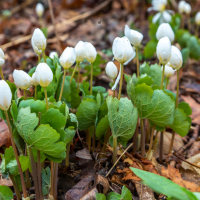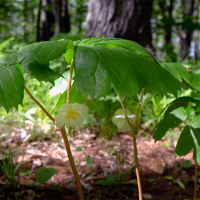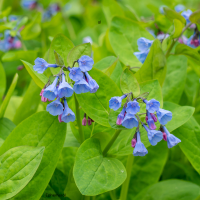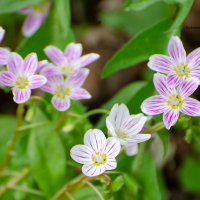An ephemeral plant is one with a short, seasonal life cycle. It emerges, blooms, and sets seed quickly—often in early spring—before going dormant. These plants take advantage of ideal conditions, like sunlight before trees leaf out, and disappear for the rest of the year, returning annually.
Here are five beautiful ephemeral plants native to central North Carolina that are perfect for adding seasonal charm to your landscape:
Bloodroot (Sanguinaria canadensis)
One of the first wildflowers to bloom in early spring, Bloodroot produces delicate white flowers with golden centers. Its unique, lobed leaves unfurl after the blooms fade. Bloodroot thrives in moist, woodland settings and disappears back into dormancy by early summer.

Trout Lily (Erythronium americanum)
Named for its mottled, trout-like leaves, this plant offers nodding yellow flowers in early spring. Trout Lily prefers rich, well-drained woodland soil and spreads slowly over time, creating beautiful colonies. It vanishes once temperatures rise, leaving only its striking foliage and blooms in early spring.

Mayapple (Podophyllum peltatum)
Mayapple forms umbrella-like leaves and produces small, hidden white flowers beneath the foliage in late spring. By early summer, it develops a small, apple-like fruit, though the plant retreats into dormancy shortly afterward. It thrives in shaded, woodland environments.

Virginia Bluebells (Mertensia virginica)
Known for their showy, bell-shaped blue blooms, Virginia Bluebells light up the landscape in mid-spring. They prefer moist, shaded areas and naturalize well in woodland gardens. After flowering, they fade into dormancy by early summer, making way for summer perennials.

Spring Beauty (Claytonia virginica)
This low-growing, delicate plant produces clusters of pale pink or white flowers with darker pink veins. It thrives in woodland settings and open meadows, blooming in early spring. By late spring, both the flowers and slender leaves disappear, leaving no trace until the next year.
